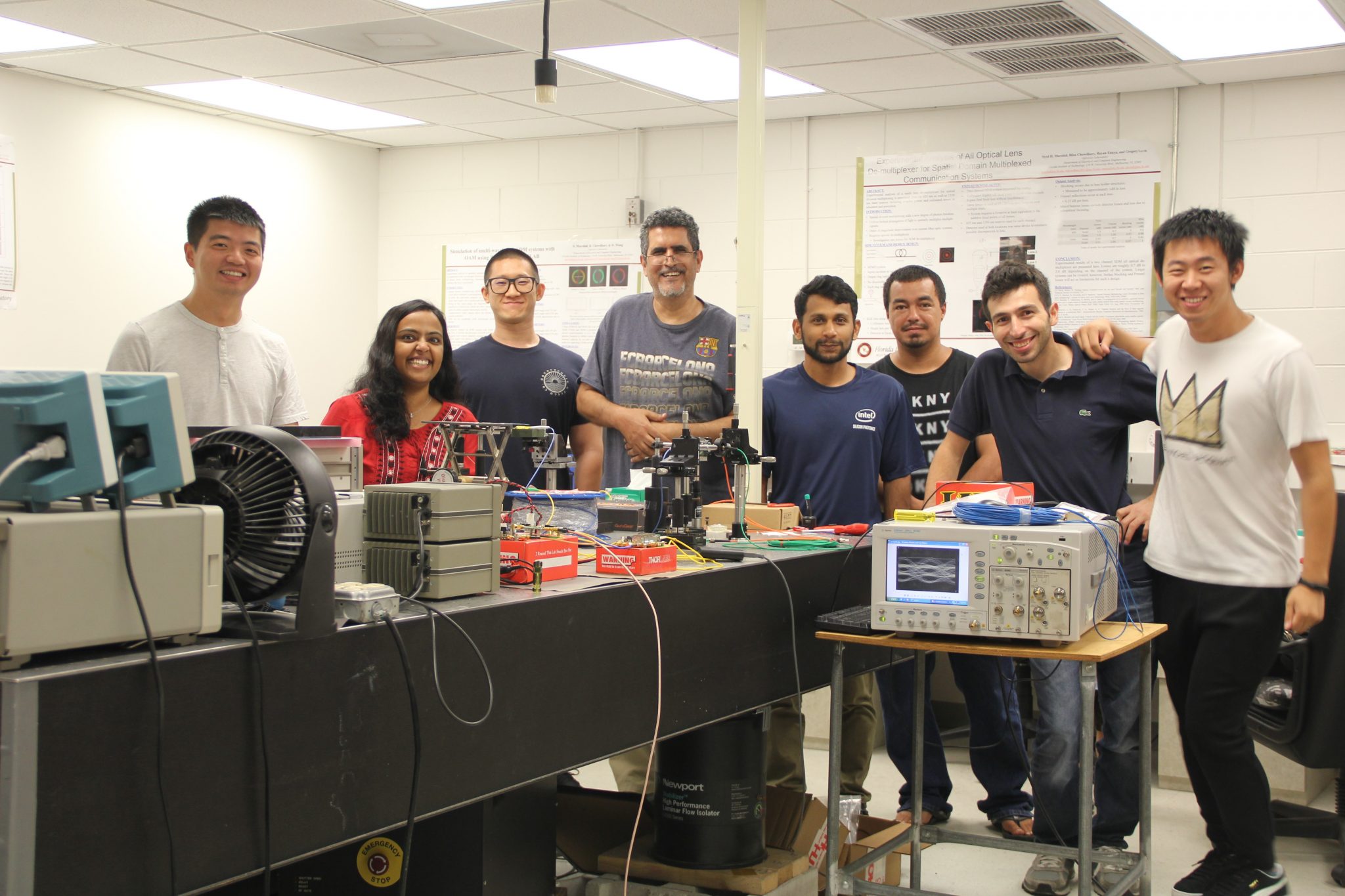“Engineers and scientists are always challenged with difficult tasks and required to do more with less. Hence, it is imperative to have the ability to visualize the solution, develop mathematical/physical models, simulate them for accuracy, and finally prove the models with the help of experiments. The ability to test the model with appropriate and reliable simulation tools significantly cuts down the time and expense.”
Figure 1: Optronics Lab at Florida Institute of Technology
“Therefore, the Optronics Laboratory at Florida Institute of Technology uses Optiwave simulation tools to design and simulate next generation optical networks before implementing those in hardware, as we have found these tools to be quite reliable. Optiwave tools tend to be the starting point in our lab for modelling E-field patterns, wave propagation, dispersion, attenuation, nonlinearities, and link budget etc., in many standard as well as futuristic applications such as SDM and modified PAM4 modulation schemes.”
Figure 2: Syed H. Murshid, Professor of Electrical and Computer Engineering at Florida Institute of Technology



